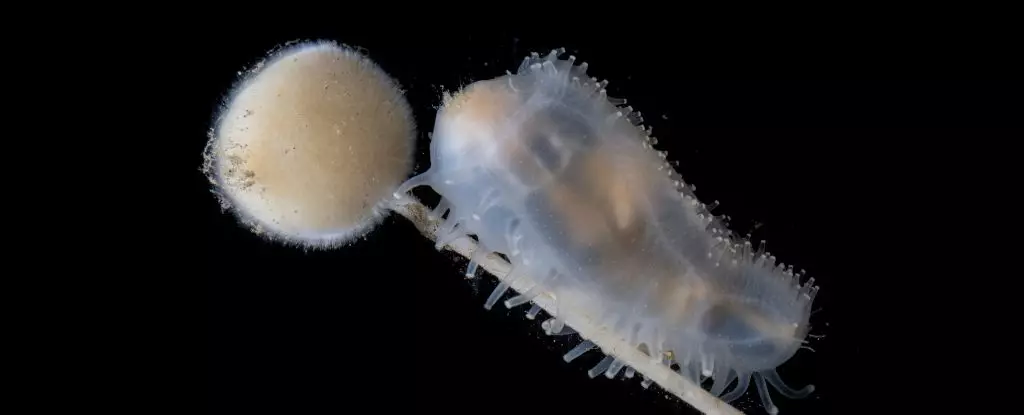In the vast, uncharted realms of our planet’s oceans, a remarkable journey is unfolding, exposing the astonishing biodiversity often hidden from human eyes. A recent 35-day voyage aboard the Schmidt Ocean Institute’s research vessel, Falkor (too), sought to illuminate the vibrant ecosystems surrounding hydrothermal vents in the South Sandwich Islands, a location previously shrouded in mystery. This daring expedition goes beyond mere scientific exploration; it is a race against time, as humanity grapples with the looming threats of climate change and deep-sea mining that threaten these fragile underwater habitats.
The team at the Ocean Census is driven by an urgent goal: to document marine life before irreplaceable biodiversity disappears beneath the waves. The expedition, faced with formidable natural challenges like beneath-the-surface earthquakes and severe storms, underscores a crucial reality—the sanctity of these ecosystems is far from guaranteed. With every monumental wave and iceberg encountered, the stakes of our oceanic understanding become increasingly apparent.
Avenue of Surprises: Life Among the Vents
What this expedition has revealed is nothing short of astonishing. Among the most compelling discoveries are the sweeping coral gardens and towering vent chimneys that stand as testaments to life’s resilience in the harshest conditions. For the first time, we are privy to sights of vermillion coral flourishing near shallow hydrothermal vents, displaying an array of colors as rich as a painter’s palette. Coupled with the exhilarating footage of a colossal squid captured speaks volumes about what lies beneath the surface—a thriving, bustling community teeming with life that we have only begun to witness.
Yet, amidst this excitement, there lies an unsettling reality presented through the lens of the expedition’s underwater cameras. Rare and enigmatic creatures, such as a nudibranch and the dreaded parasitic copepods attached to a grenadier fish, starkly illustrate the harsh ecological truths beneath the ocean’s surface. These hauntingly beautiful yet grotesque spectacles reveal the inner workings of life in the deep—a precarious balance where beauty and horror coexist.
The Specter of Extinction
However, the true gravity of these discoveries extends well beyond mere observations; they highlight a grim urgency. As marine biologist Michelle Taylor stated, this expedition serves as a clarion call: “This is why the Ocean Census exists.” Here lies the bitter irony—the very ocean we turn to for clues about biodiversity is under siege, with its inhabitants facing extinction from human impact. Witnessing the delicate reliance of these ecosystems on oblivion, we must confront the sobering truth that our actions precipitate dire consequences.
The war against climate change and exploitation of ocean resources must be fought on the front lines of exploration and education. Every new discovery, from snailfish eggs to marvelous dragonfish that elude human sight, reinforces the importance of understanding and conserving these awe-inspiring, yet vulnerable ecosystems. When scholars and scientists document these newly uncovered habitats, they invariably raise the question: will we heed the warnings and muster the will to protect what remains?
Call to Action: A Collective Responsibility
As citizens of this planet, we cannot permit ourselves to remain passive observers in this grand oceanic narrative. The revelations garnered from this expedition serve as a sobering reminder that the fate of our oceans hinges upon our collective action. While excitement bubbles over the profound discoveries, the specter of marine degradation looms ever closer. It is crucial to convert discoveries into dialogues, partnerships, and policies aimed at sustainable ocean governance that prioritizes ecological integrity over exploitation.
With the advancements in marine research, one might wonder if mankind can indeed alter the trajectory of degradation. The answer lies within our commitment to a future where marine biodiversity is cherished and preserved—not just documented from afar but actively safeguarded. Our oceans contain chapters of our natural history that deserve to be understood, celebrated, and conserved. This expedition has stirred our collective consciousness, yet this task remains daunting and urgent—an ocean of possibilities exists if we dare to act decisively.

Leave a Reply